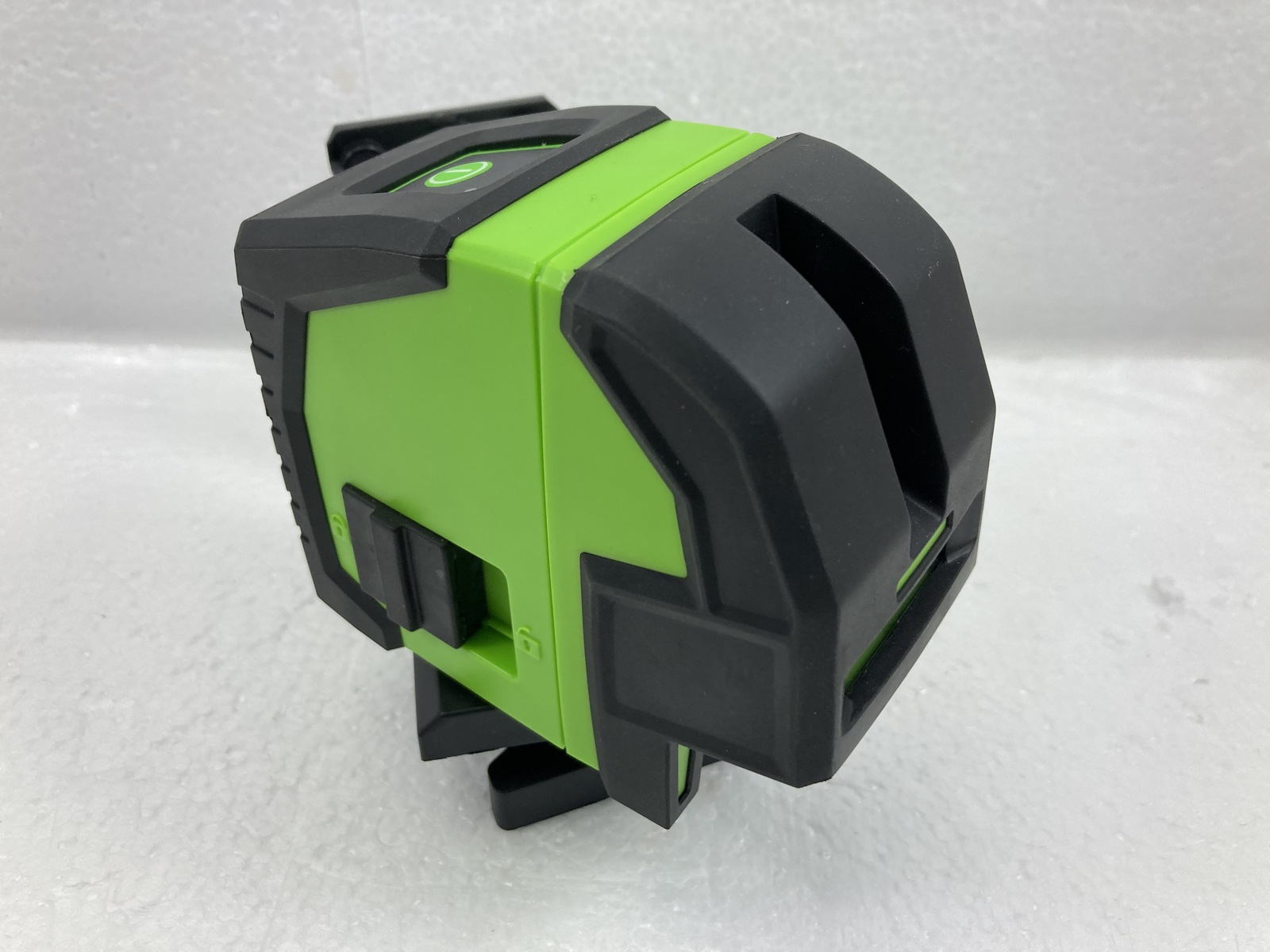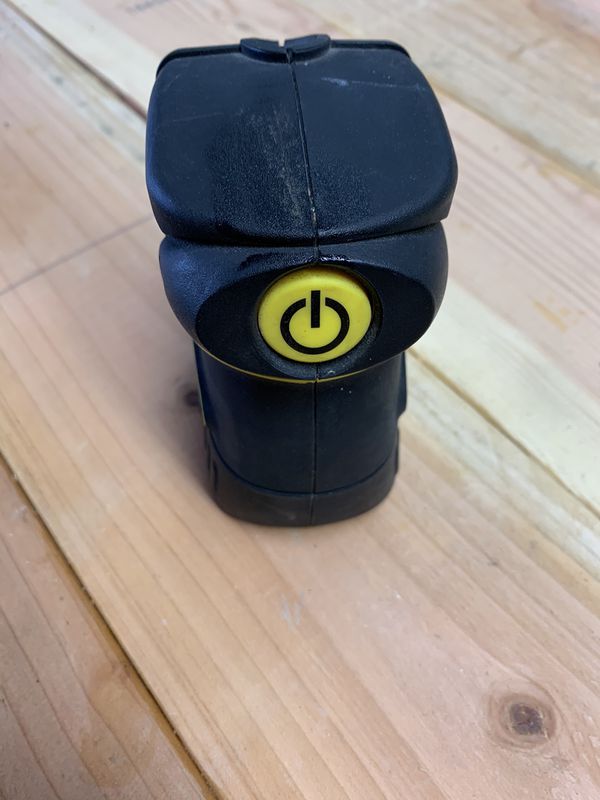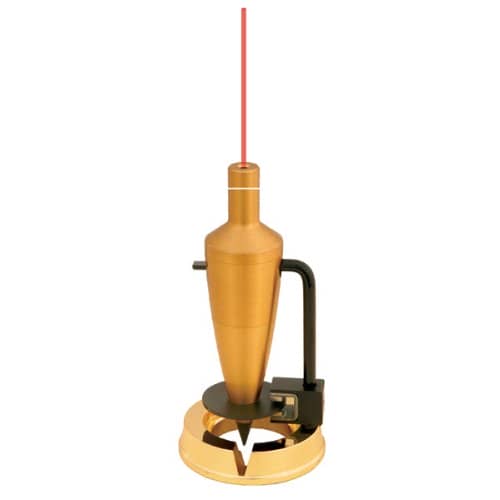

The need arises for a plumb bob incorporating a relatively simple and low cost laser therein, which plumb bob may be suspended on a relatively short line at some distance from the target. However, the disadvantages of a relatively long plumb line, and the time required for oscillations to dampen, still remain. The only advantage of such lighted plumb bobs is their ability to be used in conditions of low light.

As a result, such plumb bobs must be used conventionally close to the target and using a relatively long plumb line, in the manner of standard plumb bobs of long use. However, such lighted plumb bobs developed to this point rely upon an incandescent light source, which produces incoherent light which tends to spread even when focused through one or more lenses. However, these devices are generally quite costly, use bearings which develop at least some amount of friction which reduces their accuracy, require a relatively large amount of electrical power for operation, are prone to error due to numerous critically adjusted or set components which may be knocked or jarred out of alignment, and/or require a relatively skilled operator in order to produce accurate readings and to ensure proper handling of the apparatus in order to preclude damage thereto.Īccordingly, it has been recognized that simpler, less costly plumb bobs incorporating light means therein, may be valuable in such work. More recently, various relatively complex plumbing and leveling devices have been developed, many of which rely upon the extremely narrow beam of a laser. Traditionally, these devices have basically consisted of nothing more than a weight suspended from a string or line, with the vertical line determined by gravity. BACKGROUND OF THE INVENTIONĭevices for plumbing, or determining and forming a vertical line, have been used in the building and other trades since the earliest of times. The invention also resides in various apparatus used to position the plumb bob accurately, and further to provide an accurate target therefor. The present invention relates generally to devices used to determine a vertical line in the building construction trade and the like, and more specifically to a plumb bob utilizing a relatively short plumb line and laser device therein to project a laser beam to a target therebelow.

The apparatus may also be used with a conventional plumb bob, if desired. The apparatus allows a single person to check plumb lines for walls and the like, thus providing greater efficiency and economy in building construction. The upper fixture may include a wind shield or guard, if desired, so provide greater stability for the plumb bob. The target and upper fixture may be connected by a telescoping column, if desired. Apparatus providing for use of the plumb bob by a single person is also disclosed, comprising an upper fixture from which the plumb bob is suspended, an extension arm, and a target.

With the use of a laser to provide a plumb line of coherent light which beam does not spread, the plumb bob may be suspended from a relatively short line in order to dampen oscillations more quickly. The laser device is affixed within the plumb bob body to preclude relative movement therebetween, to ensure accuracy for the device. A laser plumb bob uses a conventional blumb bob body, hollowed to include a laser device therein.


 0 kommentar(er)
0 kommentar(er)
